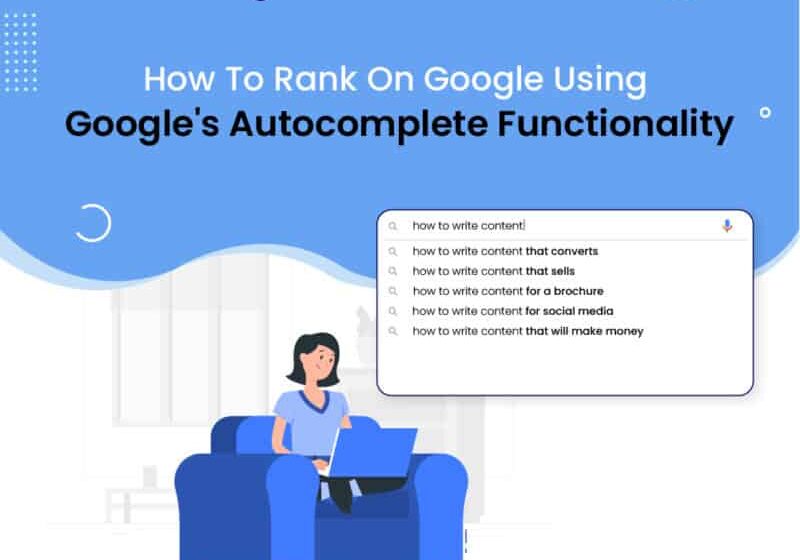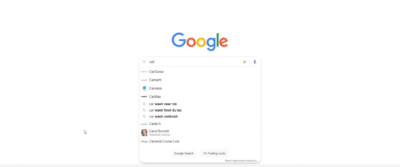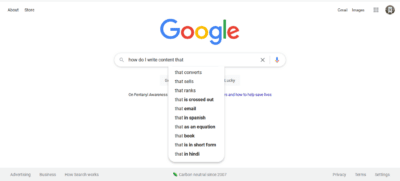Part 1: How To Rank Higher On Google Using Google’s Autocomplete Functionality

By Prebuilt Sites Team
May 24, 2022
The number one question people will always have when blogging is:
What do I write about? How do I know how to write content that is going to rank on Google?
In this three part series of blog posts from our Prebuilt Power Hour episode on 10 SEO Tricks You Can Use Right Now To Rank Higher on Google, we’re going to show you three different free tools that you can use to figure out what to write about so your blog posts have the best chance of ranking in those top spots on Google search engine results pages.
The first tool we are going to look at is how to use Google’s autocomplete functionality to learn what people are searching for on Google for a particular subject. This can universally be applied to any subject and any niche. If you’re a health coach, you’ll want to write about the things you’re going to be coaching people about. If you’re a web developer like us, you’ll want to write and share blog posts like these about running a website.
You can watch the full episode of our Prebuilt Power Hour here. These free trainings take place on the 4th Thursday of every month at noon central, so be sure to mark your calendars and tune in!
How To Use Google’s Autocomplete Functionality
When you start typing a word or phrase into the search bar on Google, you’ll notice that it auto populates a list of options to help you finish your search. This is Google’s autocomplete functionality taking over. The point of it is to help you find what you’re searching for faster, so when you start typing a word it’ll show you different options for how you can finish the sentence based off what the most popular search queries are.
In this example from our Prebuilt Power Hour, we typed in the term “car” and terms such as “Carvana” and “CarMax” and “car wash near me” autopopulated.

What Google is doing here is using a predictive algorithm to recommend search results based off what the most popular searches using the term “car” are. This tells you that if you run a website all about cars, you probably want to be writing content on “best places to get a car wash in (insert city here)”, “how to buy a car using Carvana”, “best places to buy a used car”, etc.
Tips For Using Google’s Autocomplete Functionality
If you just type one singular word into Google’s search bar, you may not get the most ideal list of keywords to target. But if you utilize these three tips below, you’ll be able to get the most out of Google’s autocomplete functionality so you can create a long list of great keywords to target on your website.
Tip #1: Ask a question using your keyphrase
People don’t often just type a singular word like “cars” into Google when trying to find a specific answer. They want to know who, what, when, where, why, and how. They want to know:
“Where is the best place to buy a used car?”
“How do I change a flat tire on my car?”

During our Prebuilt Power Hour, you’ll see that we type in “How do I write content that…” in order to see what autopopulates after. What followed was:
“How do I write content that converts?”
“How do I write content for a brochure?”
This gives us a much better idea of what to write about! These are all really common phrases that people are typing into Google, and you can take advantage of this by writing an article where the subject line and title matches exactly what the search queries are.
So based off these results, you know that you will write an article about content that converts or content that sells, content that ranks. Content that converts gets people to take a specific action, such as buy a product or subscribe to a form.
Tip #2: Find long tail keywords
Using Google’s autocomplete functionality not only helps you learn what to write about, but it also helps you find better keywords to target.
You’ll have much more success trying to rank for a keyword phrase (also called a long-tail keyword) than you would trying to rank for a singular word.
Keyword phrase or long-tail keyword definition: a keyword that contains two or more words. Long-tail keywords tend to be easier to rank for, because they have lower search volume and lower competition.
“Content” is a very general keyword that many websites are trying to rank for, so it is very difficult (if not impossible) to rank in the top spots on Google for that keyword.
But if you target the long-tail keyword “how to write content that converts”, you’ll find that you have a much higher chance of ranking high on Google for that particular keyword phrase.
Tip #3: Use “keyword and” to find related keywords

So you know that you want to write about content that converts, but what else do people search for when they’re searching about content? A good way to find other related key terms to target using Google’s autocomplete functionality, is by typing in your main keyword and then the word “and”.
For example here, I type in “content and” and Google tells me that people are searching for “content and seo” and “content and privacy restrictions”. This tells us that people not only want to know how to write content, but they also want to know how to optimize their content so it shows up in search results (which is exactly what you came to this article to learn!). They also want to know how to make sure that the content they write is in line with privacy restrictions.
So this is an excellent way to find even more keywords to target!
Part 2: How To Use Google Trends
Now that you know what people are searching for and have a list of keywords that people are searching for, the next question we are going to answer is: “How do I know how to phrase keywords and when should I target them to have the highest chance of ranking on Google?”
You will learn this in Part 2 of this series: How To Use Google Trends
You can see all of these tips in action from our Prebuilt Power Hour right here! We host these free trainings on the 4th Thursday of every month, so be sure to mark them on your calendar and tune in for more tips and tricks from our CEO/Founder, Vince, and other industry leaders!
Written By: Megan Fine

